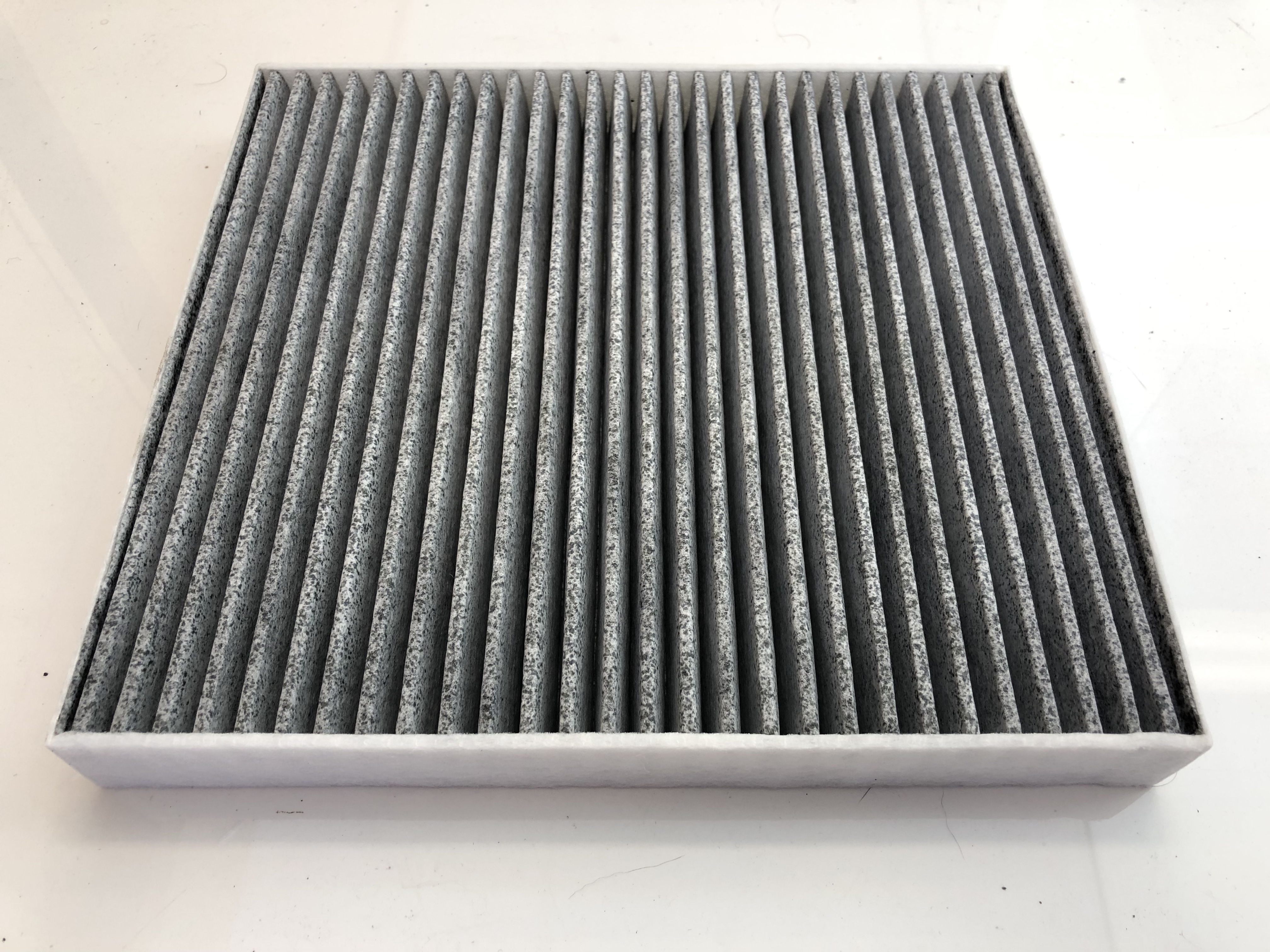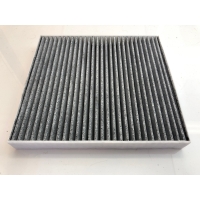Activated Carbon Cabin Filters – Are they better than paper cabin filters?

Cabin filters are designed and made to keep the air quality inside your vehicle as fresh as possible. Most vehicles on the road have at least one cabin filter installed, with luxury models such as the Lexus LS sedan offering five or more in order to maintain spring meadow-like levels of passenger compartment freshness.
The question many of us ask is, can we improve the quality and/or performance of these cabin filters by switching from paper to activated carbon? Is activated carbon worth it? Here’s our take:
Paper Filters

Paper cabin air filter - note the debris that accumulates.
Traditionally, cabin filters have been simple paper designs, similar to the filters called upon to protect your engine’s air intake from dust and other debris. The thin paper elements in these filters are electrostatically charged in order to improve their ability to repel foreign particles, and they do a great job of keeping pollen, dirt, insects and small animals from clogging up your climate control system and distributing allergens through your air vents. Paper cabin air filters are so effective that they can block particles as small as 0.22 microns.
Atmospheric Pollutants
There is one area where paper filters fall a bit short, and that is when they are forced to deal with atmospheric pollutants like carbon monoxide and nitrogen oxide. These gases can become quite concentrated on stretches of road that see bumper-to-bumper traffic, and in some cases the level of CO2 inside a vehicle can be three times as high as the environmental level, due to the concentrating effects of the passenger compartment ventilation system and the lack of protection afforded by a paper filter.
The Benefits of Activated Carbon

Activated carbon cabin filter.
Carbon monoxide and nitrogen oxide are serious health hazards, and in order to help combat their presence inside a vehicle air filter manufacturers have developed paper filters that employ a layer of activated carbon. Activated carbon is specially processed to increase its porousness, which in turn improves its ability to absorb harmful gases. 0.035 ounces of activated carbon has a surface area of 5,380 square feet – an astounding number that hints at just how effective it can be at trapping and neutralizing pollutants.
Activated Carbon – Worth the Extra Cost?
In most auto stores activated carbon cabin filters are considerably more expensive than their standard paper equivalents,
You should not have to chose between changing your cabin filter to much or paying extra for quality.


